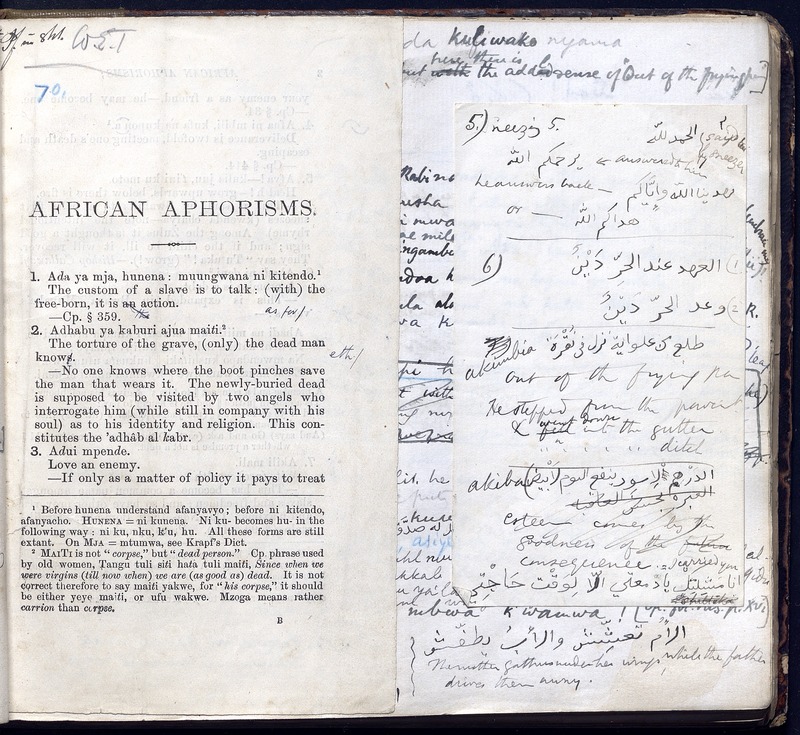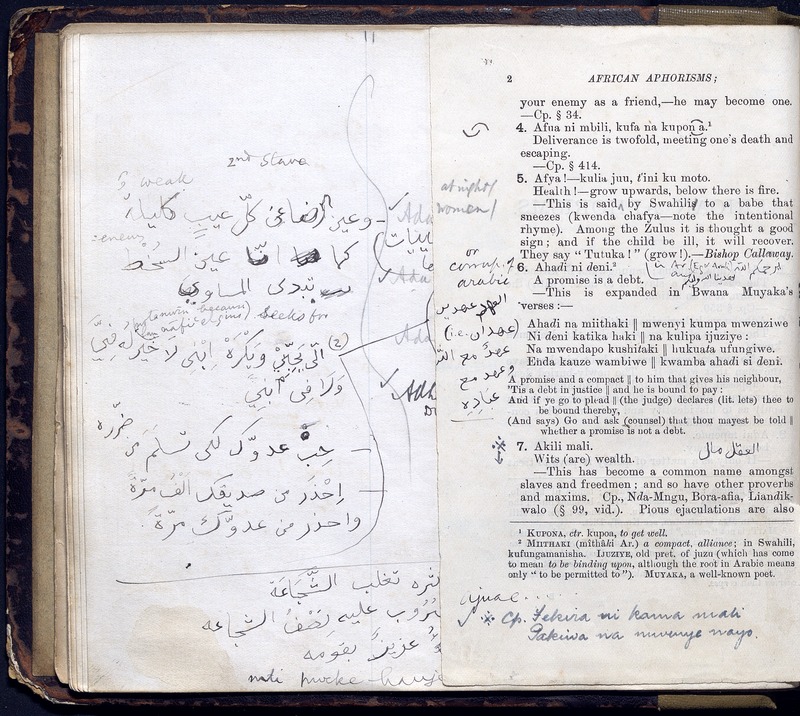The Life and Work of Rev. William E. Taylor (1856-1927)
In this blog, we discuss the life and work of the late Reverend William E. Taylor of the Church Missionary Society (CMS), who collected together many Swahili manuscripts while he was stationed in Mombasa, on the Kenyan Coast, during the late 19th century/early 20th century.
Rev. William E. Taylor was considered one of the greatest Swahili scholars, according to the late Sheikh Yahya Ali Omar and Peter Frankl who wrote about Taylor’s legacy for the promotion of Swahili literature, poetry and culture in the U.K.[1]
William Ernest Taylor was born in Worcester, England, in 1856. He was first educated at King’s School, Worcester. In 1873, he won a scholarship to Hertford College, Oxford, where he was awarded a 3rd class honour degree in classical honour moderations. Between 1879 and 1880, he attended the Medical Faculty of the University of Edinburgh, but he did not complete his degree and instead became a deacon, in 1880.
Taylor served the Church Missionary Society (CMS) in East Africa, first between 1880-1884, and returning as a missionary in 1885 until 1889. Since his first appointment in East Africa, he had begun to learn Swahili and became acquainted with eminent Swahili scholars, poets, and writers, and began collecting Swahili manuscripts, both poetry and prose.
Taylor also travelled extensively among the Giryama (Giriama) people from whom he studied the language and collected oral material.
In 1892 he returned to England and married Catherine Tesseyman, in Hull. He served again in East Africa between 1892 and 1896, but was then posted to Cairo and Karthoum between 1898 and 1903. In 1904 he resigned from the CMS and subsequently held a succession of clerical appointments, the last at Holgate, Lincolnshire.
Taylor retained his interest in Swahili, examining Swahili language exams for the War Office and translating for the Salvation Army. William Ernest Taylor died at Bath in 1927.
His collection of Swahili manuscripts and publications such as the ‘African Aphorisms’ was donated to SOAS by Taylor’s wife after his passing. The collection contains Swahili literary material that he collected during his time in Mombasa thanks to the connections that he made with the local intellectuals and poets. His interest in Swahili poetry, in particular, made him well known among the Mombasa Swahili community and a Radio programme was launched called ‘Sauti ya Tela’ (Voice of Taylor) where he discussed Swahili poetry and literature.
Taylor is remembered for the publication ‘African Aphorisms’ or Saws from Swahili-land’ (MS 47752) that was published by the Society for promoting Christian knowledge, London, in 1891. The publication contains many poems, songs and riddles in Swahili as well as in the Gyriama language of the Kenyan interlands, and translated into English for the first time.

http://digital.soas.ac.uk/LSMD000393/00001

Additional evidence of the relationship between Taylor and local intellectuals and poets can be found in the correspondence files held in MS 47769 and MS 47782, which include letters between Taylor and well known poets and scholars such as Mwalimu Sikujua; Muyaka bin Haji Ghassanyi; Mohamed Kijumwa; Bwana Malenga al-Kilifi; Ahmad bin Sheikh al-Mambassy; Sayyid Mansab bin Abdirrahman; and Abdullah bin Rashid, among others.
Without the support of this local community of intellectuals, Taylor would have not been able to collect the many and varied manuscripts that he brought to the SOAS Archives. Looking at Taylor’s story in East Africa, we can learn about the colonial Victorian encounter in a diverse way, not only an encounter based on violence and looting but also one of mutual respect and genuine interest in the rich and varied literature of the Swahili people of East Africa by an unusual missionary.
The full list of manuscripts in the Taylor collection can be found in the SOAS Digital Library here: http://digital.soas.ac.uk/taylor/all/
[1] Frankl, p. & Omar, Ali Y (1993), ‘W.E. Taylor (1856-1927) Swahili Scholar Extraordinary’, S. Afric. J. Afric. lang, 1993, 13 (2).
